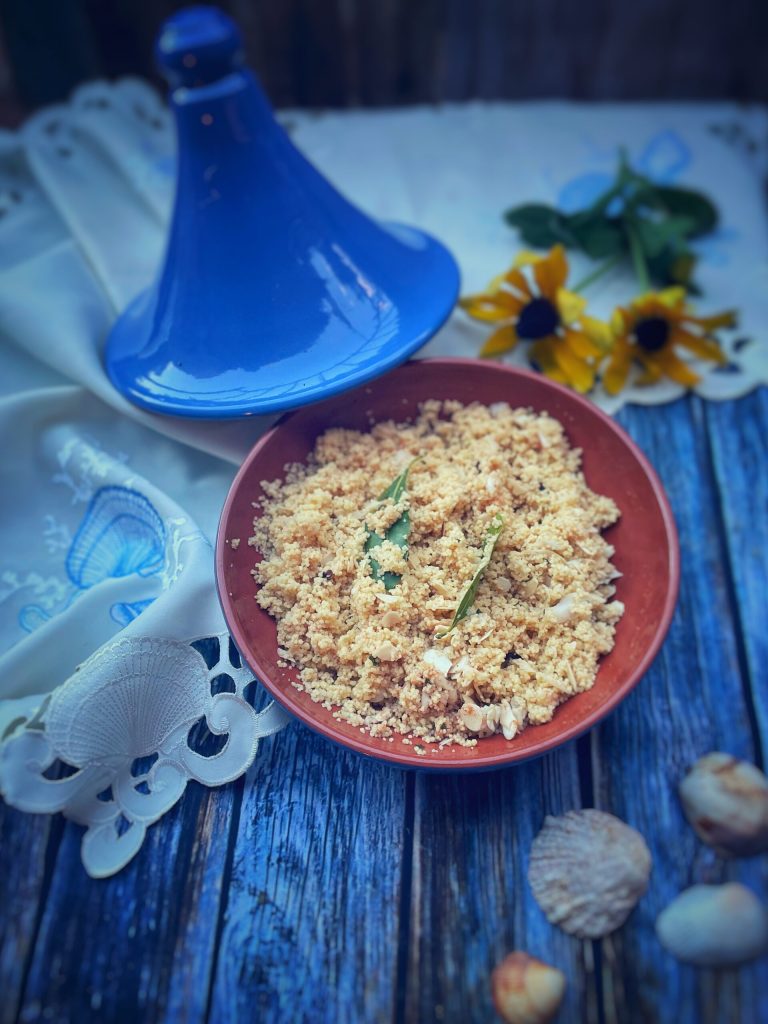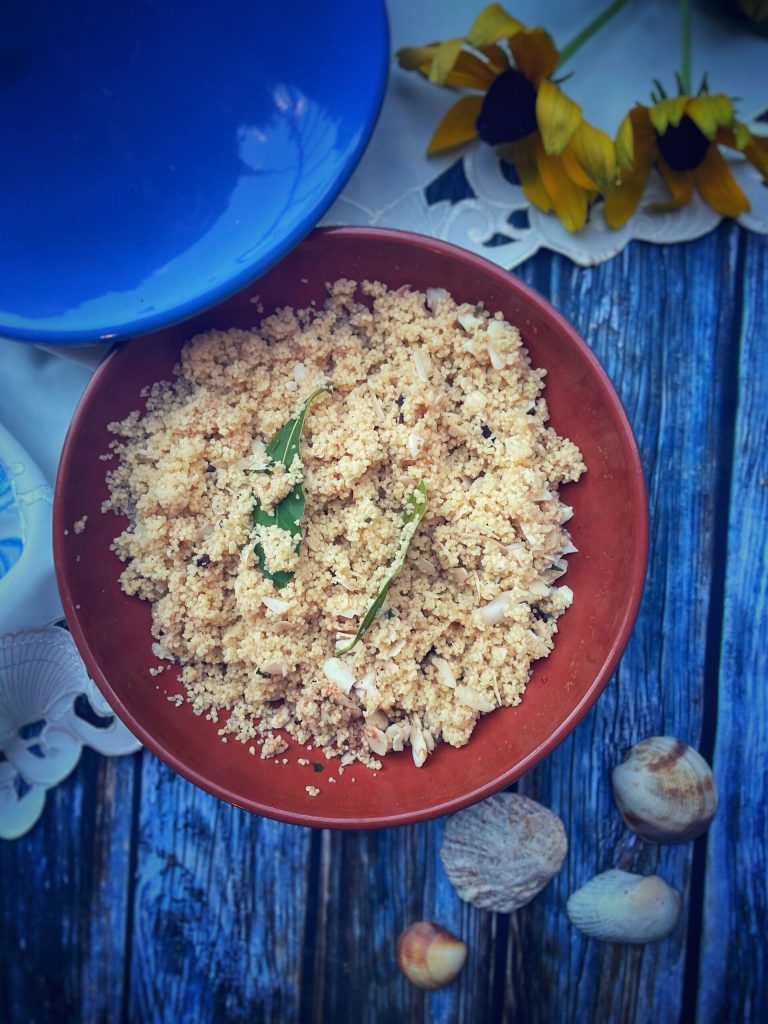The Trapani-style couscous can be considered a single dish, in its traditional version with fish, typical of the Trapani area.
A rich, symbolic, and complete dish, celebrated in San Vito Lo Capo at the Cous Cous Fest.
The couscous is steamed and then flavored with a very rich fish broth (often made with scorpionfish, gurnard, grouper…), called “ghiotta” which is poured over the hand-rolled semolina and steamed in the pot (the local couscoussier, called “mafaradda”).
The fish used for the broth is sometimes served separately, whole or in pieces, but not mixed into the couscous itself.
The dish is sometimes accompanied by a spicy sauce with garlic, almonds, and tomato.
In couscous, fish is not added directly, but the broth is used to flavor it, and the fish remains separate or served alongside.
Trapani-style couscous is an extraordinary example of cultural fusion.
It originated in western Sicily, especially in the Trapani area, where for centuries the geographical proximity and trade relations with North Africa (especially Tunisia) facilitated the exchange not only of goods but also of culinary traditions.
Couscous, a staple of Maghreb cuisines, was adapted by Sicilians using local ingredients.
Instead of the meat or legumes typical of Arab versions, here it is prepared with fish broth.
The dish thus reflects the maritime identity of Sicily and the Arab cultural heritage that profoundly marked the island, especially between the 9th and 11th centuries during the Islamic Emirate of Sicily.

- Difficulty: Medium
- Cost: Medium
- Preparation time: 40 Minutes
- Portions: 4 People
- Cooking methods: Steaming, Stove
- Cuisine: Italian
- Seasonality: All seasons
Ingredients
- 10.5 oz raw couscous
- to taste parsley
- to taste cinnamon
- to taste cloves
- to taste extra virgin olive oil
- to taste salt
- 2.2 lbs Bones, heads, and scraps of soup fish ((scorpionfish, gurnard, boga, John Dory, etc.))
- 1 tablespoon strattu (or 2 peeled tomatoes)
- 4 cloves Nubia red garlic
- 1 onion
- 2 leaves bay leaf
- to taste salt and pepper
- to taste extra virgin olive oil
- 1.8 oz sliced almonds
Tools
- 1 Couscoussier mafaradda
Steps
Seasoning and rolling the semolina:
Slightly wet the semolina with salted water, add minced garlic, parsley, oil, and spices, mix and rub with your hands to obtain small clumps (cocci).
Let it rest and fluff with a little oil.
Cooking in the couscoussier:
Pour the clumps into the upper part of the couscoussier.
Steam for about 1.5 hours. Seal well between the two pots with a paste of flour and water.
Halfway through, fluff and drizzle with some broth (abbivirata), then continue cooking.
Preparing the ghiotta:
In a pan, sauté onion, garlic, and chopped almonds.
Add strattu, fish parts, enough water to cover, bay leaves, and salt.
Cook for 40–50 min.
Strain everything to obtain a thick and aromatic broth.
Place the couscous in a bowl, drench with the hot ghiotta.
You can also serve a raw sauce separately with crushed garlic, almonds, oil, and tomato paste.
FAQ (Questions and Answers)
Can pre-cooked couscous be used?
Yes, pre-cooked couscous can be used for a simplified version of Trapani-style couscous, but with some precautions:
do not cook it in the fish broth, but rehydrate it with slightly salted hot water, then fluff it with a fork and subsequently season it with the strained broth.
You won’t have the same aroma and texture as the traditional steaming in the mafaradda, but you’ll still get a good dish, much quicker to prepare.What is strattu?
“Strattu” is the Sicilian term for tomato paste, a traditional product of the island.
It is obtained by sun-drying tomato sauce until it reaches a dense consistency and intense flavor.
It is a key ingredient in many Sicilian recipes, especially for long-cooked meats and sauces.

